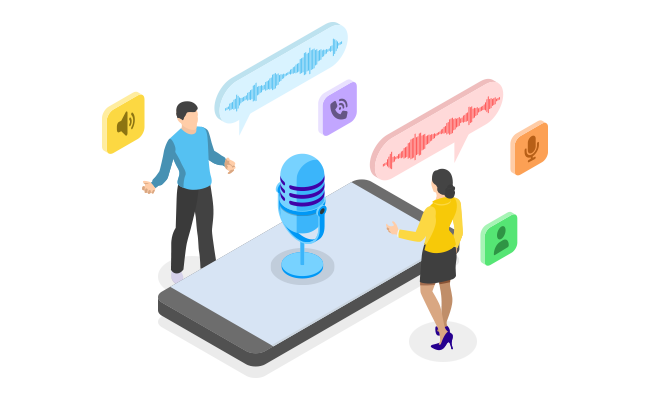Voice broadcasting, which first appeared in the 1990s, is a mass communication method that enables you to call thousands of individuals at once and stream pre-recorded messages to them. Voice broadcasting used to be one of the most often used tactics for political groups in the run-up to elections. But since then, the tool has greatly advanced in its use cases.
It currently seems to be a successful medium for businesses of all sizes to engage with a wider audience in order to make sales, share messages, get feedback, and so much more.
What is voice broadcasting?
What exactly is voice broadcasting? It’s comparable to using a megaphone while standing on a stage in front of a sizable audience. You speak into the megaphone because you need to get your urgent message across to the entire crowd right away. Everyone in the audience hears your message, which draws their focus to the stage.
Using voice broadcasting technologies, you can simultaneously send a single message to a large number of phone numbers. The technique of voice broadcasting has a wide range of potential uses. Over 75% of the companies that took part in HubSpot’s 2021 State of Marketing survey used automation to sell their products and services. Among the many automation tools available, voice broadcasting is extremely flexible.

Voice broadcasting can be used for reminders, lead generation, and customer support. Businesses might use speech broadcasting to inform consumers of a deal or special promotions. Usually, voice broadcasting includes recording a message, sending it to a service for voice broadcasting, and then choosing a list of phone numbers to call. The service will then broadcast the recorded message and automatically call the numbers.
How does voice broadcasting work?
If you are curious how to go about it, let us break down this to you that using voice broadcast is quite simple. There is no doubt that you are already familiar with how calls operate. Voice broadcasting uses a similar basic idea, but there are a few extra procedures to deal with the larger distribution size.
Here’s how voice broadcasting software operates on cloud:
- Compose a message and record it. Numerous businesses have a text to speech app that can read the message in a particular language or accent. Mona process
- Add your contacts/phone numbers list. You can use a phone validator to ensure that the listings only contain active and legitimate phone numbers.
- Plan out your advertising campaign. It’s ideal to make the calls at a convenient time when you know the majority of your clients will be available.
- Next, you need to put in place features like interactive voice response (IVR) and two-party connection so that clients can reach you back and engage better.
- The best part is the entire process of creating a campaign and recording a message can be completed in a matter of minutes.
What are the benefits of voice broadcasting?
Let’s talk about the advantages of the technology for your business now that you understand what voice broadcasting is and how it can be used.
1. Reaching a large audience instantly
Thousands of individuals can hear your message at once at a fraction of the speed using voice broadcasting technology and software. It’s especially helpful for important announcements, emergency notices, and information that must be delivered quickly.
2. Easy to use
You may easily construct a campaign using straightforward software like MS Excel, upload the recorded message, set the campaign, and finish.
3. Integrates with your CRM
The voice broadcasting programme integrates seamlessly with the CRM programme you already use. You can record responses that users provide into the CRM and upload information straight into the system.
4. Cost-effective
The system is a one-time, inexpensive investment that offers great value. You can get the same outcomes for a small installation and setup price, which would otherwise require a lot of effort from professionals.
5. Statistics and insights
Voice broadcasting software can offer data on parameters like the number of callers who answered, how long they listened to the conversation, and more. Thus, you can use this information to increase output and optimise your messages.
6. Customisation
Voice broadcasting enables you to add the recipient’s name, current location, or other relevant details to messages. This can improve the message’s potency and raise the likelihood that it will be received and taken seriously.
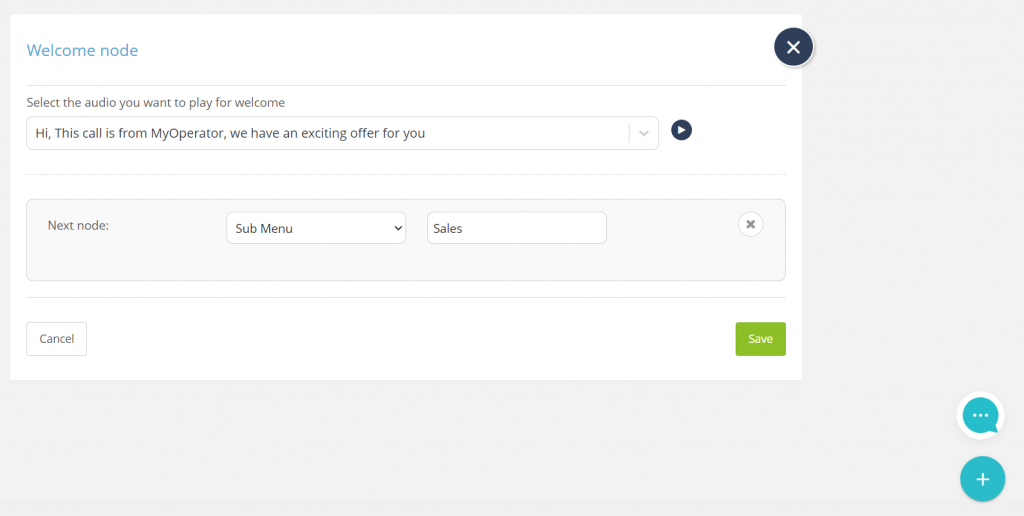
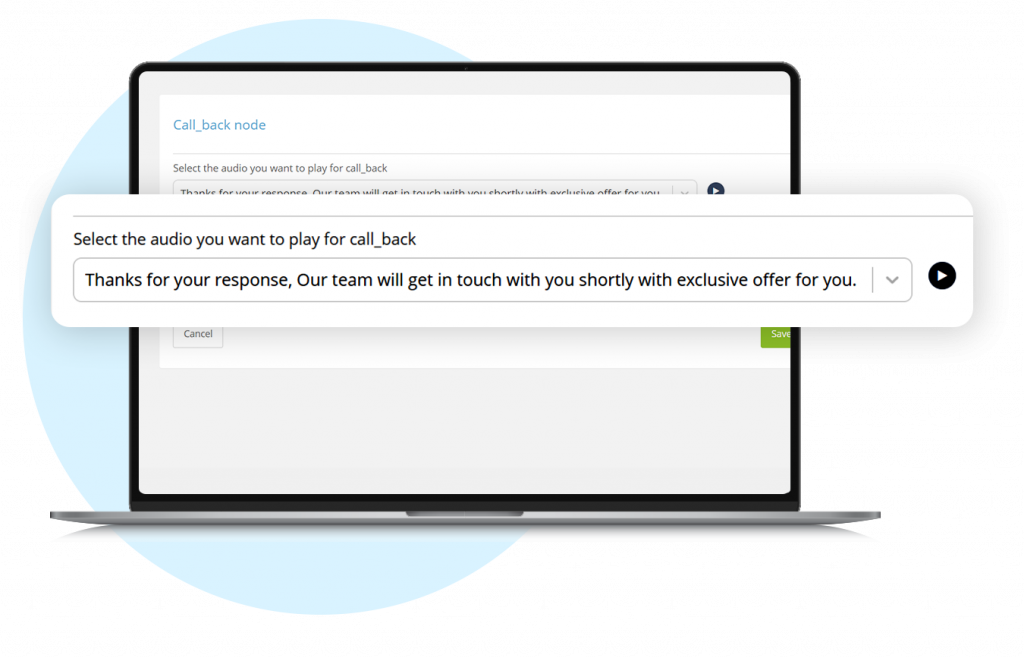
7. Flexibility
Voice broadcasting can be utilised for a variety of tasks, such as reminders for appointments, customer support, and political campaigns. It is a useful tool for any organisation because of its adaptability.
8. Better Communication
By providing accurate and up-to-date information, voice broadcasting can enhance communication and raise consumer satisfaction. By doing this, you can win over your clients’ trust and loyalty.
What are the best voice broadcasting software solutions?
To instantly and effectively reach a large audience, voice broadcasting has emerged as a crucial tool for corporations, organisations, and individuals. Numerous speech broadcasting software options are currently offered on the market as a result of the advancement of technology. Some of the best voice broadcasting software solutions are as follows:
1. Express Pigeon
It is a cloud-based platform that provides a range of communication options, including voice broadcasting. Express Pigeon enables you to quickly generate and send pre-recorded messages to a huge number of recipients. Moreover, it provides call answering, call recording, and call monitoring.
2. Call Loop
Call Loop is an easy-to-use, web-based audio broadcasting tool that enables you to quickly and efficiently deliver pre-recorded messages to a significant number of recipients. It also provides call tracking and thorough data, allowing you to monitor the effectiveness of your initiatives.
3. MyOperator
MyOperator is a cloud-based communication platform that provides a variety of functions for businesses of all sizes. Whether you run a small startup or a large enterprise, MyOperator’s cloud call center solution can revolutionize the way you connect with your customers. You can compose and deliver messages that are tailored to the recipient’s name, where they are located, or any other relevant details. It is the perfect option for efficiently reaching a wide audience as it provides extensive reporting and call tracking, automation of outgoing calls, scalability, flexibility in terms of message planning, easy integration with other platforms, and round-the-clock support.
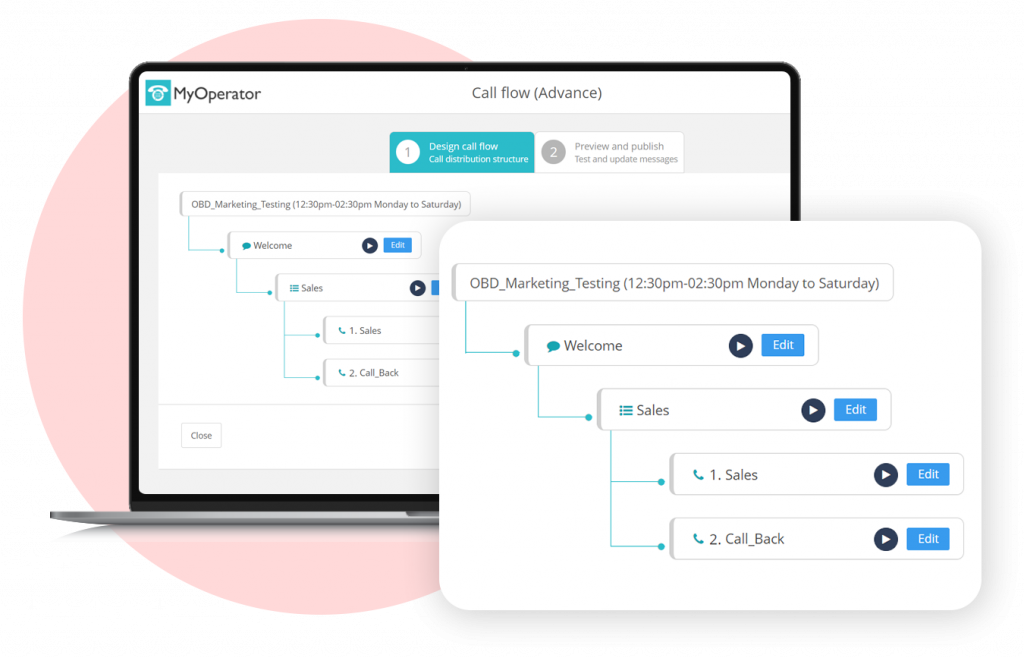
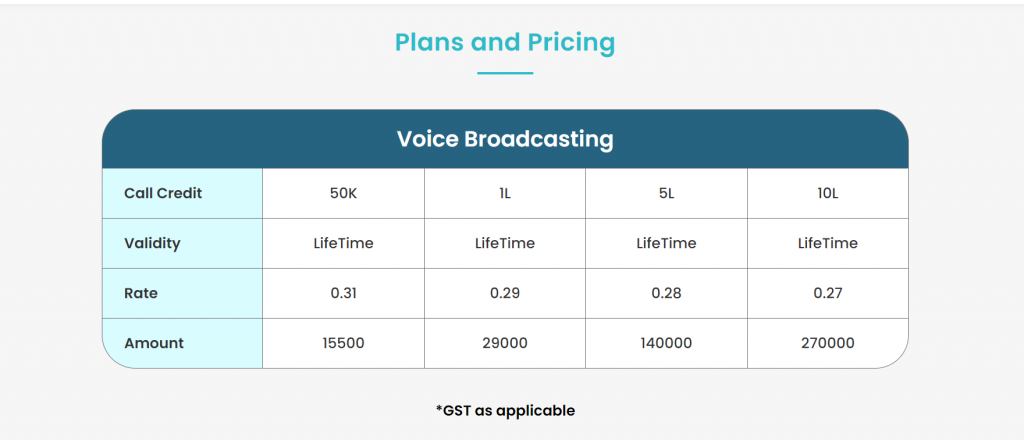
4. CallFire
With just one call, CallFire’s cloud-based voice broadcasting software lets you reach thousands of individuals. Numerous options are available, such as customised messaging, call monitoring, and thorough reporting. Furthermore, it features an intuitive user interface that makes it simple to use for individuals of all experience levels.
5. DialMyCalls
Automated calls, text messaging, and email broadcasting are just a few of the services offered by the well-known voice broadcasting application DialMyCalls. Additionally, it provides comprehensive data and calls monitoring, enabling you to monitor the success of your activities.
How can voice broadcasting be used for market research?
Voice broadcasting can be used for market research in addition to telemarketing and customer service. Surveys can be used to gather information for market research. Businesses can learn important details about their target market, such as their demographics, buying behaviour, and satisfaction with a product or service, by employing pre-recorded questions and multiple-choice answers. Once trends have been identified, decisions about product development, marketing tactics, and customer service can be made using this data.
Focus groups are another method of conducting market research using voice broadcasting. Businesses can learn more about how their target audience views and reacts to their products or services by gathering a group of individuals and inviting them to listen to a pre-recorded message or product demonstration. This is particularly helpful for testing new goods or marketing initiatives.
Using voice broadcasting to announce impending events like product launches or sales is another way to conduct market research. Businesses can use this to assess interest in their products and find potential clients. Did you know? Businesses can use the voice broadcasting feature of MyOperator to carry out surveys for market research. They can come up with a list of inquiries and record a voice message to be delivered to the intended audience.
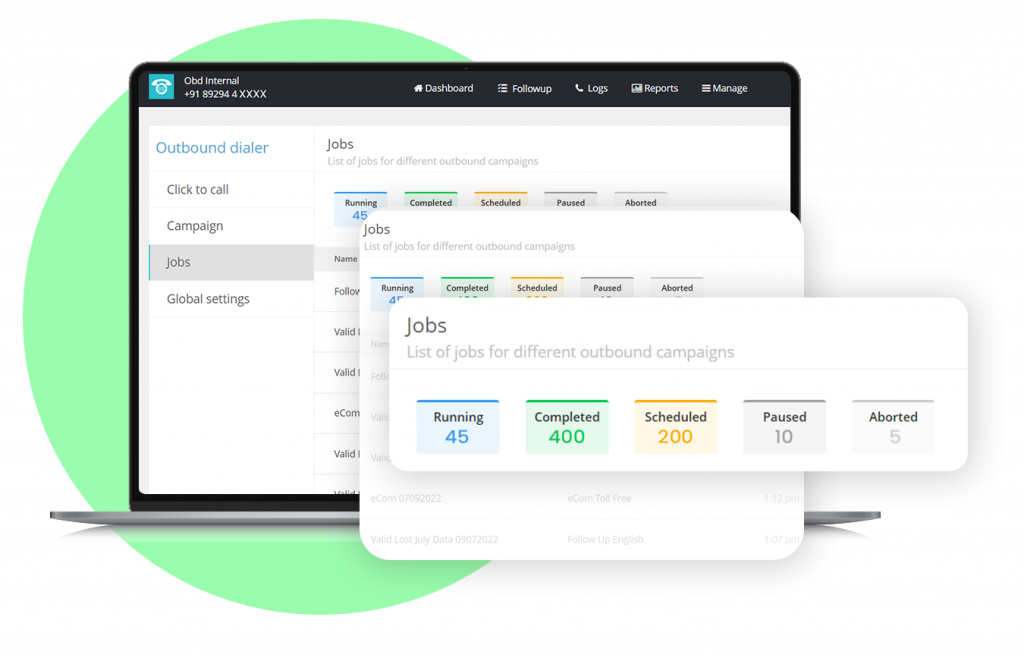
The audience can then dial the number shown in the message and leave their answers, which will be recorded. The responses can be automatically gathered and analyzed by MyOperator’s call center software, giving organizations insightful data about their target market.
Sending a message to a list of potential customers to determine their interest in a new product or service is another way MyOperator’s voice broadcasting may be utilised for market research. Businesses can evaluate the potential demand for their new offering by monitoring the number of calls made in response to the message.
Voice broadcasting is a wonderful method to start communicating with your customers and developing the connections you make on your website and through social media.
Here are some suggestions to assist you in such undertakings:
- Inform current and past clients about flash sales.
- Customers who place significant or repeated orders should receive thank-you letters.
- Send a select group of VIP clients exclusive discounts and bonuses.
- Provide exclusive deals to those who have expressed interest in your goods or services.
What are the legal requirements for voice broadcasting?
While employing voice broadcasting, some specific legal restrictions must be adhered to. The Federal Communications Commission (FCC) and the Federal Trade Commission are federal agencies that supervise voice broadcasting (FTC). The Telephone Consumer Protection Act (TCPA) and the Do Not Call Registry are the key legal provisions that control voice broadcasting.
The TCPA, which was passed in 1991, controls the use of telemarketing calls, automated calling systems, and pre-recorded communications. The regulation stipulates that calls to cell phones must only be placed with the recipient’s express prior agreement and that all pre-recorded calls must contain an automatic opt-out mechanism.
The TCPA also forbids calls made before 8 a.m. and after 9 p.m., and telemarketers must keep a list of those who have asked not to be called on a do-not-call registry.
People can add their phone number to a list of numbers that telemarketers are not allowed to call by using the FTC’s Do Not Call Registry. Every 31 days, telemarketers must examine the registry; if a phone number is on the list, they must not call that number. The TCPA and the Do Not Call Registry both carry hefty fines for violations.
State rules concerning telemarketing and voice broadcasting also exist in addition to these federal regulations, so it is crucial to be aware of them if you plan to do business in a certain state.
How to know the success of a voice broadcasting campaign?
Long gone are the days of those bothersome, uninvited communications. They just don’t work, making them the equivalent of spam in their day. Take the same steps you would for an SMS campaign while using voice broadcasting: get permission before sending any messages, only send valuable information, and pick your time carefully.
Pro tip: Your voice broadcast campaign will definitely make you stand out from the competition if you can land a well-known endorsement or endearing voice actor in the deal.

Here are a few key parameters to measure a voice broadcasting campaign’s success:
1. Reach
Counting the number of people who saw the message is a crucial performance indicator. The number of phone calls made or voicemails left might be used to gauge this.
2. Response rate
It’s important to know how many people took the message to heart. The number of calls or messages received in response to the campaign might be used to consider this.
3. Conversion rate
The number of persons who engaged in a given action as a result of the campaign is known as the conversion rate. It could be a transfer of funds, registering for a service, or responding to a survey.
4. Retention of the message
Determining how long individuals retain the message is vital. A follow-up survey to see if individuals remembered the main points can be used to gauge this or by counting the number of people who pay attention to the entire message.
5. ROI
The most relevant indicator is the return on investment (ROI). The campaign’s financial impact is measured here in terms of how much was earned or spent less.
6. Call duration
It measures how long it takes the recipient to hear the message. Longer calls typically signify more message engagement.
Businesses can utilise tools like call tracking software, survey software, and analytics platforms to evaluate these parameters. Businesses can enhance their insight into how their voice broadcasting campaign is doing by examining these metrics and, as necessary, making appropriate changes.
What are the best practices for voice broadcasting?
Following these four voice broadcasting best practices will help you get the most out of this valuable technology.
1. Maintain an updated database
Your speech broadcasting system’s effectiveness will depend on how well you connect with and reach the intended audience.
Make sure your database is up to date before beginning to work on your message, not only for names and contact information but also to determine whether the people in it are suitable customers for what you have to offer. You can make your message more relatable to your audience when you are well acquainted with them.
2. Develop the message with a human touch
Realising that they are speaking to an automated voice message is one of the things that may turn people off.
Even if voice broadcasting is automated, there are several things you can do to make it feel more personal. Like stopping for a few seconds after delivering the welcome so that the customer might answer as well, utilising the prospect’s name in the pre-recorded message etc. As a result, the call recipient might be more responsive to hearing the complete message. It, in turn, broadens your conversion potential.
3. Combine inbound and outbound calls
It’s risky to limit voice broadcasting to sales calls that are totally automated. The ideal practice for voice broadcasting is to use this function for a combination of inbound and outbound calls and to provide potential customers with the choice of chatting with a live person.
After giving customers the relevant information, the message might say something like, “Press 9 to connect to a representative for further details.” This strikes the right balance between automation and human interaction during the call and improves client engagement.
4. Pick the appropriate time
If you want to have a positive influence, time is key. While launching your voice broadcasting campaign, timing is an important consideration. Executives may find it difficult to respond to a call in the late afternoon, whereas homemakers may find it challenging to respond to and pay any attention to a call in the early morning.

Furthermore, providing potential customers only two hours prior to a deal’s scheduled expiration is not enough time for them to make a decision regarding whether or not to take advantage of the chance.
Pay close attention to the timeframe of your voice broadcasting campaigns if you want to engage your potential customers when they are in their ideal frame of mind.
How to choose the right provider for voice broadcasting?
Gaining the greatest level of customer connection is the main goal of a voice broadcasting service. However, this service also showcases your most recent specials and discounts on goods and services. Sending out recorded audio messages can also assist in raising brand image.
Although many companies rely on social media and other advertising methods, voice broadcasting remains the key to grabbing clients’ undivided attention. Why don’t we just go with a well-known company that is reasonably priced and provides voice broadcasting services? However, it’s not as easy as it seems. It’s necessary to give thought to a wide range of factors.
One poor call could ruin all of your marketing efforts, so conduct your research and choose a provider who ticks all the necessary boxes. The following are some of the factors to take into account:
a) Test for scalability, coverage, and dependability
Be sure to carefully consider the scalability, coverage, and dependability of a voice broadcasting service before making a decision. Although they may appear to be three distinct ideas, they are actually related since they tell you how many individuals you can reach, where you can find them, and how frequently you can interact with them.
During your research, consider the following questions:
- What number of voicemails can you send in a minute?
- Does this provider provide coverage internationally? If so, how many nations are included?
- Does the provider utilise a Tier 1 network?
- How long will the provider guarantee uptime?
Answers to these queries should be available from their website and software details. For software success measurements and performance objectives, it’s also beneficial to check the service-level agreement (SLA) of the operator.
b) Explore the features
Some speech broadcasting features are essential, such as Interactive Voice Response, Answering Machine Detection, Press 1 Voice Campaigns, and Text to Speech. There are also plenty of other options that would substantially help your business and strengthen your campaigns in addition to these.

Multichannel communication, call quality tracking and recording, DTMF tones, one-time passwords, and real-time reporting are a few frequently requested broadcasting capabilities. Many businesses also place a high priority on services like post-pay billing and two-party communication.
c) Analyse online reviews
Every voice broadcast software vendor will highlight their features and assert that they give the greatest service. However, online reviews provide verifiable evidence of their functionality and degree of client satisfaction.
On sites like Google, GetApp etc, you may read reviews of their business and software. View the testimonials of actual clients. A rating of four or five stars should not be taken at face value; instead, one should look into the number of reviews, the reviewers, and the company’s response to any unfavourable comments.
Have you read about the ways that MyOperator’s outbound dialing solution helps Prime IVF Centre win over customers’ trust? Click here to read.

d) Benefit from Demos and Free Trials
It’s better to be safe than sorry; if a company asks you to agree to their voice blast programme without first trying it out, then choose another source. The best vendors will gladly provide you with demonstrations and free trials so you can experience their software and determine whether it matches your needs.
Have you used the MyOperator free-trial option? In just 30 seconds, you can create a business call account. Ready to begin your free trial today? Also, do not be hesitant to inquire during demos. The more information you have, the better able you are to determine whether this supplier is ideal for you.
e) Assurance of regular upkeep
Your supplier must plan routine maintenance and always add new features to keep your solution current with technology. This helps your operations and strengthens your relationship with the supplier.
It fosters trust by demonstrating the provider’s genuine concern for the quality of the services you receive. Some service providers offer a combination of tools, such as toll free number and IVR service that may be used in combination with voice broadcasting to make marketing a breeze.
How to set up and run a voice broadcasting campaign?
To set up and manage a voice broadcasting campaign, follow these steps:
1. Make a list of contacts and other details
To start a voice broadcasting campaign, make a list of the mobile numbers you want to transmit your message to. You can make this list manually by entering phone numbers into a file or database, or you can do it automatically by utilising a list-building tool. Since sending a message to the wrong phone number can be a waste of resources and hurt your image, it is crucial to make sure that all of the listed phone numbers are correct and up-to-date.
Additionally, think about addressing the following questions:
- Why are you doing this campaign?
- Is it to make money or to raise awareness of social issues?
- What results do you anticipate from this campaign?
- Which customers are you trying to attract?
Before creating the campaign’s outline, you should have answers to a handful of these questions. By answering these questions clearly, you can ensure that your campaign produces both qualitative and statistical outcomes.
2. Keep a record of your message
You need to start recording the information you will send to the phone numbers on your list. To produce a message of the highest calibre, you can use recording software or a professional recording studio. It’s crucial to make sure your message is understandable and relevant for your target audience, as well as interesting and distinct.
3. Select a voice broadcasting service
After recording your message and compiling your list of phone numbers, you must select a voice broadcasting provider to deliver your message. Numerous services are offered, namely software programmes and online platforms. It’s crucial to take into account the functions a service offers, such as the capability to schedule messages, monitor the effectiveness of your campaign, and maintain your list of telephone numbers. Getting a toll free number for your business can enhance your outreach efforts by making it easier for potential recipients to contact you without incurring any charges.
4.Check your content
It is crucial to test your message to make sure it is functioning properly before sending it to every phone number on your list. Sending the message to a select number of phone numbers as well as listening to the tape to check that it is understandable and clear are two ways to achieve this.
5. Send the message
You can send your message to every contact number on your list once you have reviewed it and are pleased with the outcome. In order to be effective, it’s crucial to send your message at the appropriate time, such as during work hours if you’re targeting enterprises or late at night if you are considering a purchase.

6. Track your progress
Following the delivery of your message, it’s critical to monitor the success of your campaign. It will assist you in determining the success of your message and how to make future campaigns more effective. By keeping a record of how many calls were returned and how many voicemails were left, you can determine the results.
Thus, we can conclude that voice broadcasting is the most effective and enticing marketing strategy for both consumers and business owners. Especially when it comes to marketing or simply spreading the word without actually investing too many resources.
You may do market research, learn about the demands of your potential customers, drive sales, and boost team efficiency with a voice broadcasting service.
Do you currently use voice broadcast? If not, what is the reason? Please share your thoughts in the comments section, and we will be pleased to answer them.
FAQs
Q1: Is voice broadcasting a form of digital marketing?
Ans: Email, RSS, voice broadcasting, fax broadcasting, blogging, podcasting, streaming media, wireless text messaging, and instant messaging are all examples of digital marketing.
Q2: What exactly is the function of a broadcast message?
Ans: A function called Broadcast Message enables one user to simultaneously transmit announcements and messages to a large number of other users. The message is delivered to the recipients as a typical instant message and can be manually chosen by the sender from their contact list.
Q3. How many contacts can I ideally target in a single voice broadcasting campaign?
Ans: You can target as many people as you want in a single campaign.
Q4. How can I broadcast a message without saving contact details?
Ans: Using the WhatsApp Business API, you can send messages to an unlimited number of people at once, including those who haven’t added you to their phone list. Only people who have chosen to receive WhatsApp notifications from your company are eligible to get the messages.
Q5. Is voice broadcasting legal in India?
Ans: The answer is yes. Just ensure that your calls are made only between 9 am and 9 pm.
Q6. How long should the length of my voice recording be?
Ans: You are free to record for as long as you like. For the best quality recording, ensure that you record in a quiet space.
Have more questions? Please book a free demo

